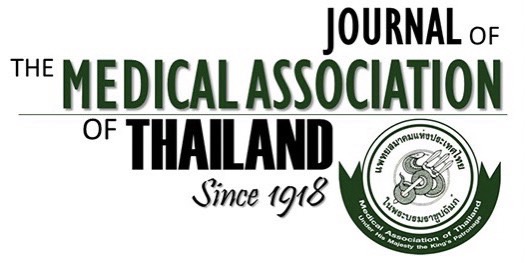Comparing the Efficacy and Success Rate of Radial Artery Approach under Ultrasound Guidance and Palpation Technique for Coronary Intervention at Central Chest Institute of Thailand
Kamonrat Thongplung¹, Chanikarn Kanaderm¹, Thamarath Chantadansuwan¹
Affiliation : ¹ Department of Cardiology, Central Chest Institute, Nonthaburi, Thailand
Background: Previous studies of ultrasound guidance for transradial artery access during coronary angiography or interventional procedures demonstrate improving success rate, number of attempts, and short-time access in radial artery cannulation.
Objective: To compare the benefit of ultrasound guidance radial artery access during coronary angiography (CAG) or percutaneous coronary
intervention (PCI) with palpation technique in experienced and inexperienced operators.
Materials and Methods: A randomized prospective study was performed between October 2021 and April 2022. One hundred sixty-four patients were randomized into three groups. The first group, group I (55 cases), underwent radial artery puncture with ultrasound guidance by an experienced interventionist. The second group, group II (56 cases), underwent radial artery puncture using the palpation technique by another experienced interventionist. The third group, group III (53 cases), was also assigned to radial artery puncture with the palpation technique, however, performed by three interventional cardiology fellows.
Results: The success rate of radial cannulation was 55 (100%) in group I, 52 (92.9%) in group II, and 48 (90.6%) in group III (p=0.060). Firstattempt
success rates in the three groups were 83.6%, 75%, and 69.8%, respectively (p=0.233). The median number of attempts was not significantly different (p=0.208). Time to access the radial artery in group I was reduced significantly compared to the palpation technique in group II and group III (p<0.001). There were no significant differences in complications such as difficult access, access site crossover, radial spasm, and hematoma/ bleeding complication (p=0.135, 0.367, 0.132, and 0.700, respectively).
Conclusion: In experienced operators, an ultrasound-guided technique has been shown to have beneficial advantages in reducing the time to
access radial artery cannulation compared to experienced and inexperienced operators using the palpation technique.
Received 17 August 2022 | Revised 30 December 2022 | Accepted 9 January 2023
DOI: 10.35755/jmedassocthai.2023.03.13807
Keywords : Transradial catheterization; Ultrasound guide



